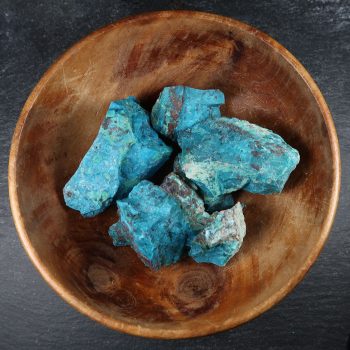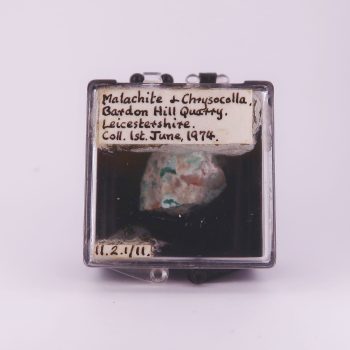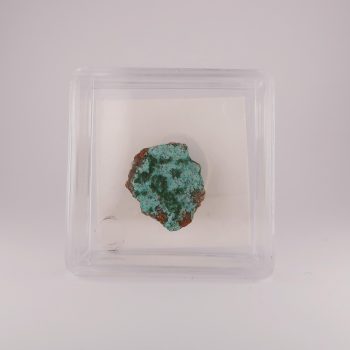Chrysocolla
Chrysocolla is a copper mineral, often used as an ore. It is generally a mixture of colours, including white, green, blue and aqua.
It often occurs alongside other Copper minerals, including Malachite, Cuprite, and Azurite.
Despite its obvious value as an ore, it is often sold polished – either for jewellery use or as a decorative object.
Showing all 7 results
-

Andradite Garnet and Chrysocolla from Kharan, Pakistan
Price range: £25.00 through £45.00 -

Chrysocolla Cabochons
Price range: £6.50 through £12.00 -

Chrysocolla from Helvetia, USA
£10.00 -

Chrysocolla Specimens
Price range: £4.00 through £20.00 -
New

Malachite and Chrysocolla from Bardon Hill Quarry, Leicestershire
£15.00 -

Malachite and Chrysocolla polished slices
Price range: £2.50 through £4.50 -

Psuedomalachite and Chrysocolla from Desire Mine, South Africa
£10.00
Appearance, Uses and History
Chrysocolla is primarily used as an ore of Copper, but its bright colours have attracted jewellers since antiquity. As it is relatively affordable and significantly more available than Turquoise, it is often used as a replacement.
The name Chrysocolla comes from the ancient Greek χρυσός (chrysos) and κολλα (kolla), meaning “gold glue”, as it was used to solder Gold pieces by ancient Greek jewellers.
There are a great many polished pieces of Chrysocolla available, but personally I find the natural botryoidal mineral specimens most interesting.
Locales
Chrysocolla can be found in many locations around the world, including Australia, Canada, China, Czechia, Congo, France, Greece, Iran, Mexico, Namibia, New Zealand, Norway, Peru, Russia, Spain, and the USA.
Mineralogy
Hazards and Warnings
Chrysocolla dust can be quite toxic and should not be inhaled or left on the skin.
Almost all rocks, minerals (and, frankly, almost all other substances on earth) can produce toxic dust when cutting, which can cause serious respiratory conditions including silicosis.
When cutting or polishing rocks, minerals, shells, etc, all work should be done wet to minimise the dust, and a suitable respirator or extraction system should be used.
Translations
Arabic:
- الكريزوكولا
Hindi:
- क्राइसोकोला
Portuguese:
- crisocola
Bengali:
- ক্রিসোকোলা
Indonesian:
Punjabi:
English:
- chrysocolla
Italian:
- crisocolla
Russian:
- Хризоколла
French:
- Chrysocolle
Japanese:
Spanish:
- Crisocola
German:
-
Chrysokoll
Korean:
- 크리 소 콜라
Thai:
Gujurati:
Mandarin and Traditional Chinese:
Urdu:
